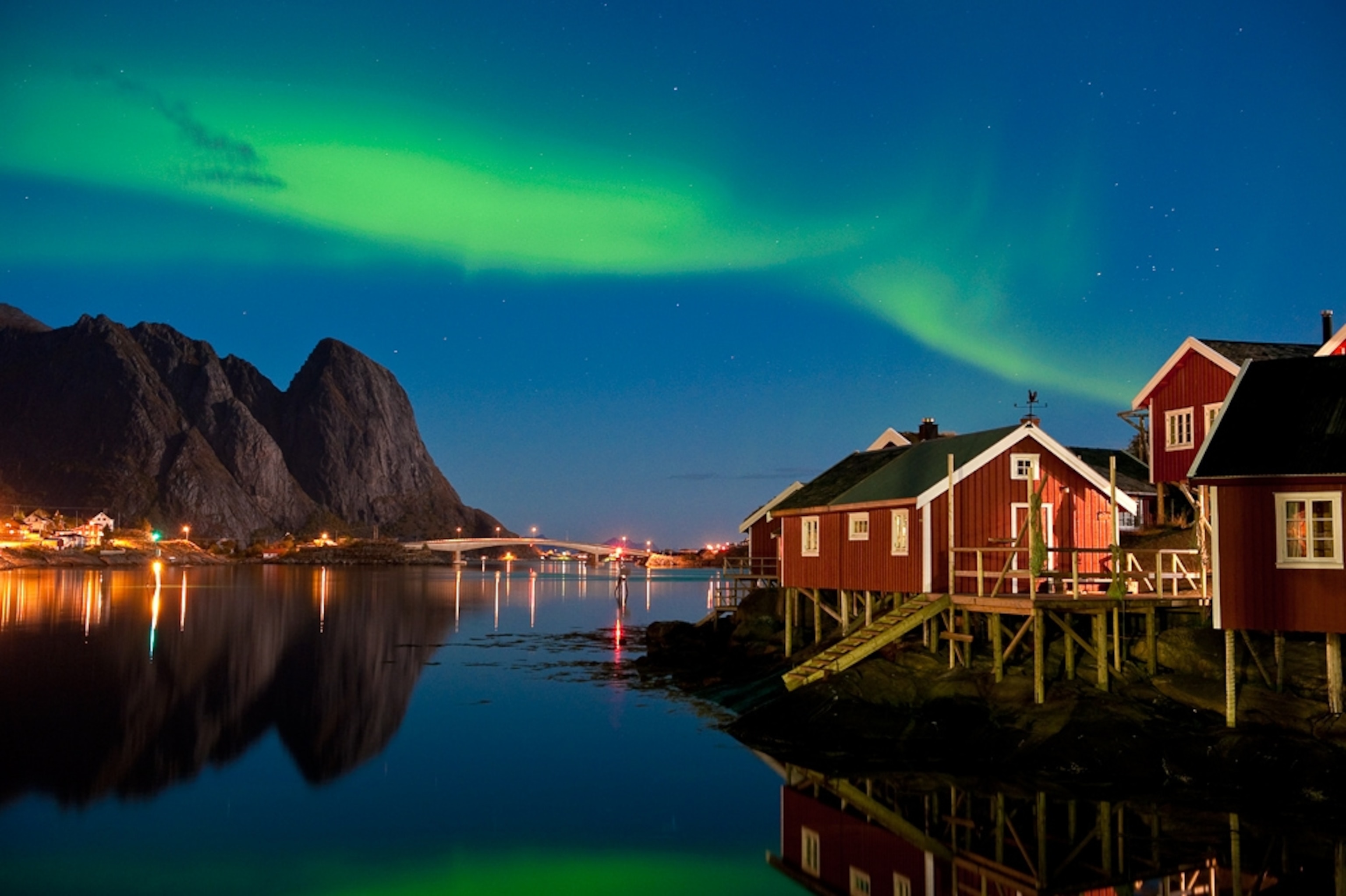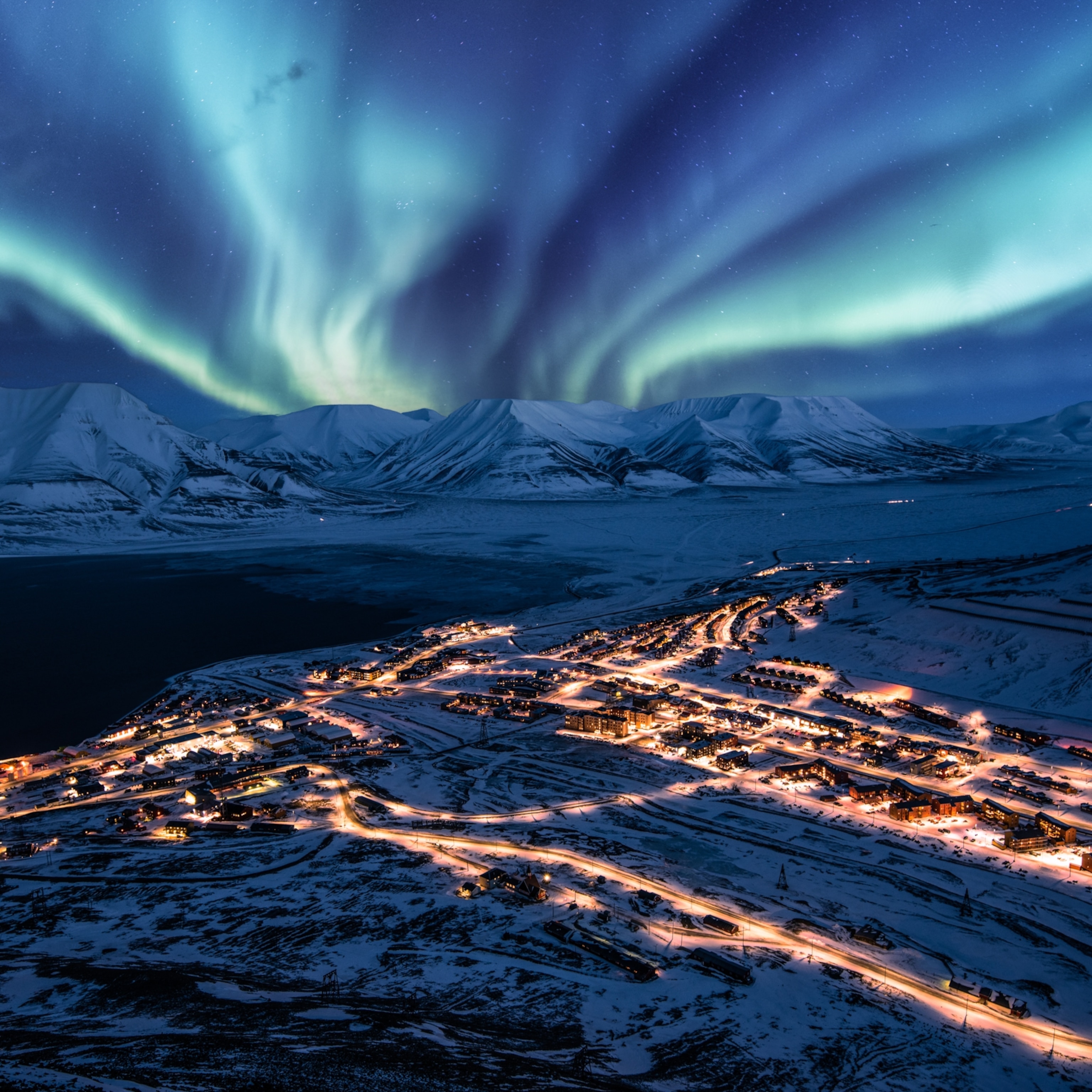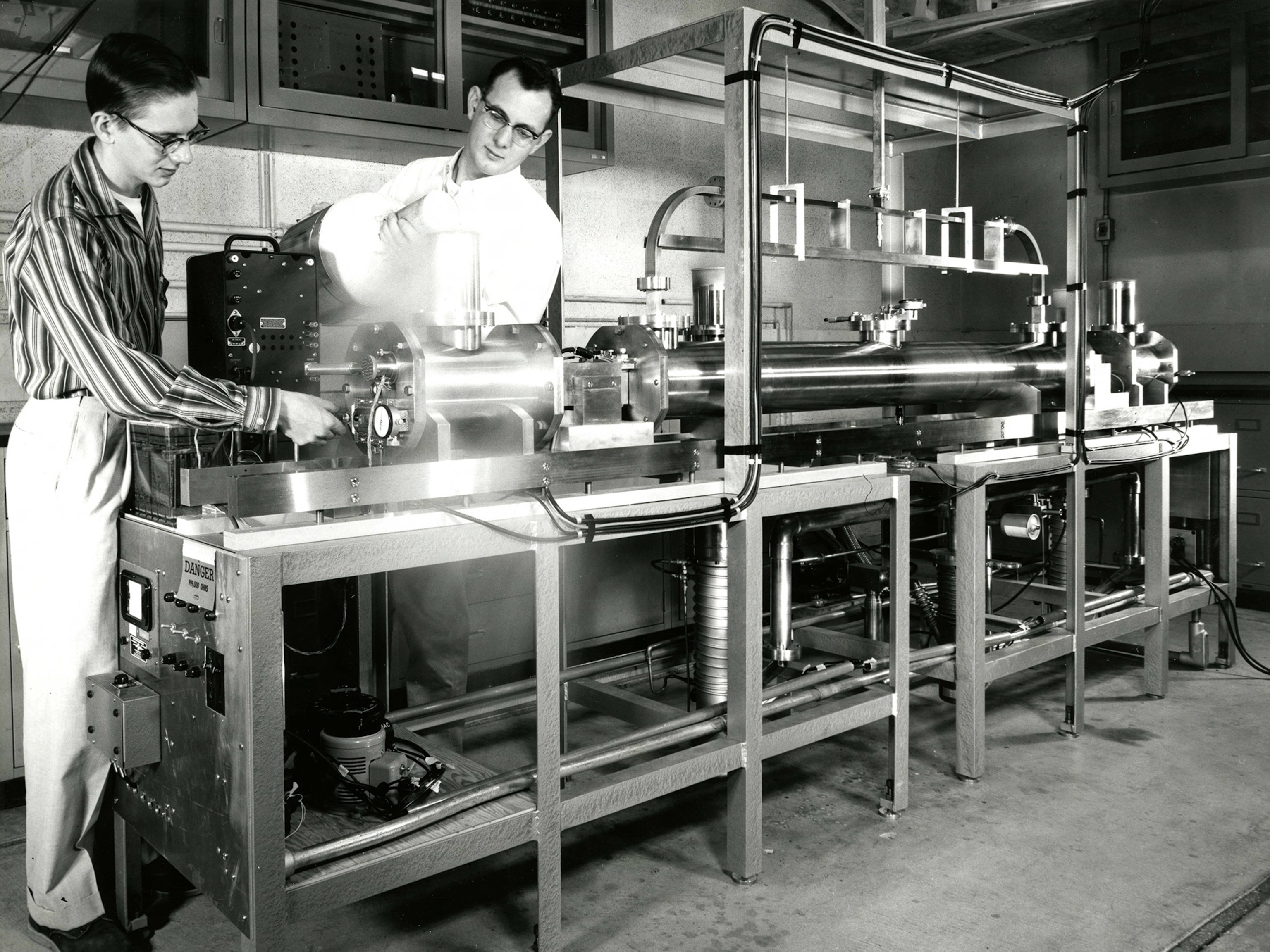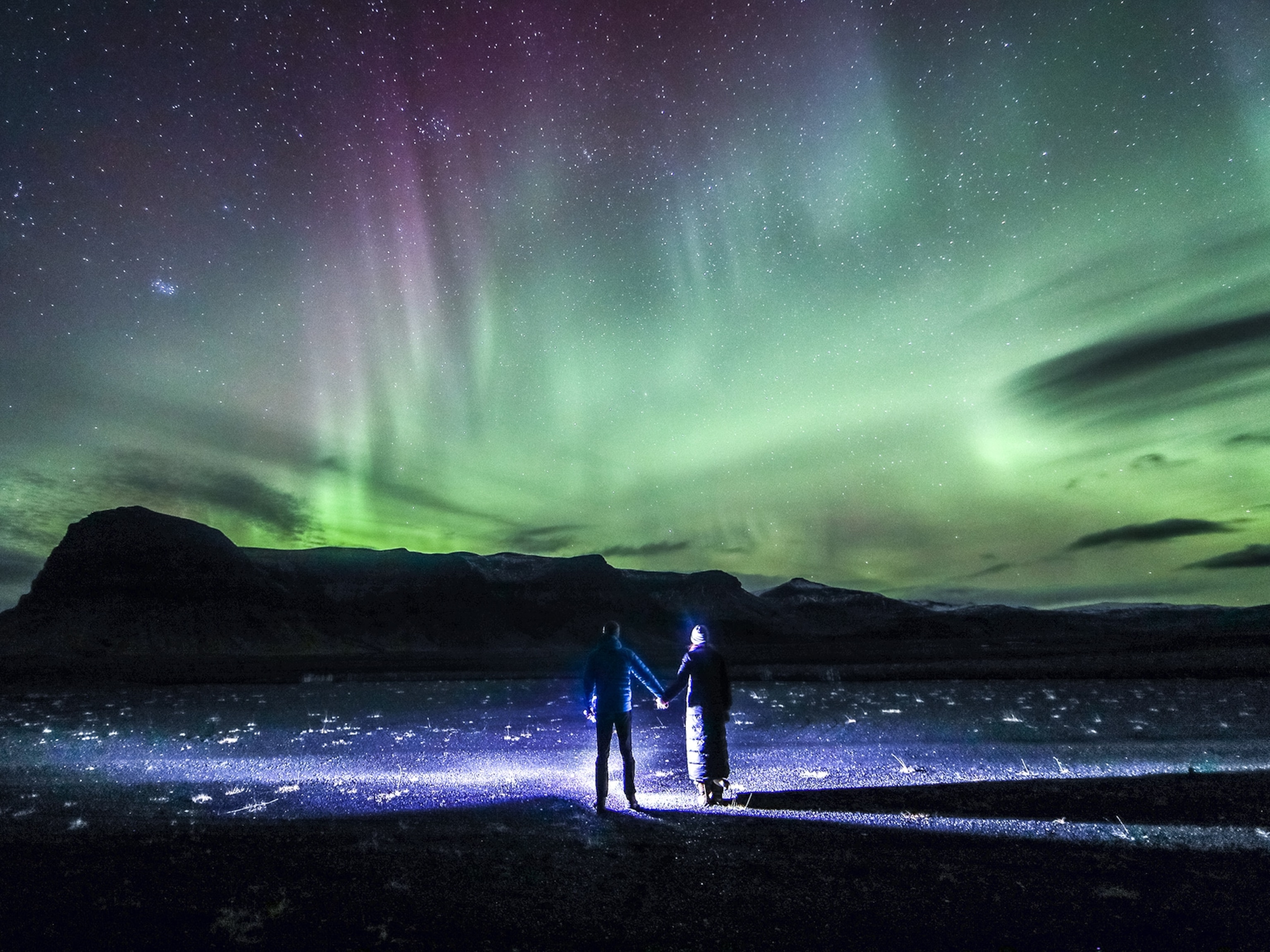
How to see the northern lights—and why they’re showing up more recently
The aurora borealis and aurora australis have dazzled us in the night sky for centuries. Here’s what causes them—and where the best places are to catch a glimpse.
No matter how many times you see them, the northern lights, or aurora borealis—and their Southern Hemisphere equivalent, the aurora australis—are an ethereal, breathtaking sight. Dancing silently in Earth’s upper atmosphere, they form iridescent sheets of green and red (or sometimes blue and purple) light.
And this week, across the northern United States—and even parts of the Midwest—they’re expected to put on a rare show.
On April 12 and 13, a pair of coronal mass ejections (CMEs) erupted from the surface of the sun; as a result, when their electrically charged particles hit Earth’s atmosphere this week, states as far south as Iowa may be treated to vivid displays of northern lights. As many as 18 states—from Alaska and Montana to New England and New York—may experience colorful displays.
The phenomenon is expected to peak on April 16 before tapering off the next day. Although the lights may be visible all night, the best viewing times are expected to be between 10 p.m. and 2 a.m. local time wherever you’re skygazing.
However, this won’t be the last opportunity for viewers in these areas to see northern lights over the next several months, as the sun is in the middle of a "solar maximum," the peak of an 11-year cycle in which storm activity on its surface waxes and wanes.
Common in polar and sub-polar regions, auroras can sometimes be seen at lower latitudes, including recent dazzling displays as far south as Florida. If you live in the contiguous United States, but it seems like you’ve been able to see auroras far more often than you normally would—well, you’re right. Here’s why.
What are auroras, or the northern and southern lights?
Italian astronomer Galileo Galilei, coined the term aurora in 1619 after the Roman goddess of dawn—mistakenly believing it to be the reflection of sunlight off the atmosphere.
In fact, both northern and southern lights are caused by the interaction of gases in Earth’s atmosphere with the solar wind: a stream of electrically charged particles, called ions, that shoot out from the sun in all directions.
(Staring at the sun: an interactive look at our dynamic home star.)
When the solar wind reaches Earth, it slams into the planet’s magnetic field, producing currents of charged particles that flow toward the poles. Some of the ions become trapped in a layer of the atmosphere called the ionosphere, where they collide with gas atoms—primarily oxygen and nitrogen—and "excite" them with extra energy. This energy then gets released as particles of light, or photons.
Why are auroras different colors?
An aurora's colors signify where in the atmosphere, and with which gases, all of this is happening.
For example, it takes almost two minutes for an excited oxygen atom to emit a red photon, and if one atom collides with another during that time, the process may be interrupted or terminated. So, when we see red auroras, they are most likely at the highest levels of the ionosphere, approximately 150 miles (240 kilometers) high, where there are fewer oxygen atoms to interfere with one another.

In contrast, green photons are discharged in less than a second, so are more common in moderately dense parts of the atmosphere, 60 to 150 miles (100 to 240 kilometers) above Earth’s surface.
In the very thick lower atmosphere, less than 60 miles (100 kilometers) above the planet's surface, we see a purplish mixture of red and blue lights—the signature colors of molecular nitrogen.
Where can you see auroras?
Auroras have been observed on every planet in the solar system except Mercury—even, as with Venus and Mars, when the magnetic field is very weak or nonexistent. They have even been detected on a huge “rogue planet” 20 light years away. And astronauts have taken spectacular photographs and video of Earth’s auroras from the International Space Station.
For the more earthbound among us, the best places to see auroras are in the “auroral zone,” between about 60 and 75 degrees latitude, both north and south. You’re even likelier to see an aurora if you’re in a smaller band of Earth between 65 and 70 degrees latitude. The broader band includes locations like Anchorage, Alaska and Yellowknife, Canada, while the smaller zone includes Fairbanks, Alaska and Tromso, Norway.
(Here's the best place to see northern lights in the lower 48 states—and how to visit it.)
You also need somewhere where the skies are dark and clear and far from light pollution. In the Southern Hemisphere, that generally means Antarctica, Tasmania, or southern New Zealand in fall or winter. North of the Equator it includes locales such as the areas around Fairbanks, Alaska; Churchill, Manitoba; and the Lapland area of northern Sweden and Finland, among many others.
When do auroras occur—and are they happening more often?
One good way to predict a strong aurora night is to count forward 27 days from the most recent one; auroras are strongly associated with sunspot activity, and as it takes 27 days for the sun to rotate on its axis, that’s how long it will take an aurora-producing sunspot to show up again.
Some years see more auroras than others. Sunspot activity fluctuates on an 11-year cycle; the most recent upward trend began in 2019 and is peaking this year.

Greater sunspot activity is also why there are sometimes aurora displays in parts of the world that otherwise rarely see them. This rise in activity creates a greater likelihood of large solar storms, which can shoot electromagnetic radiation and particles toward Earth; when they hit our atmosphere, they flood it with so many particles that the auroral zone expands far beyond its usual limits.
This effect was most recently in evidence in early 2023, as solar storms resulted in auroras being visible as far south as Arizona and England. In addition to causing dazzling displays, however, these solar storms can also impact power grids and GPS systems.
(Solar storms may throw off whale navigation too.)
Even the most active of sunspot cycles, however, will find it hard to match the largest solar storm on record, however. On September 1, 1859, astronomers had been watching a growing number of sunspots develop on our star’s surface when a solar flare sped toward Earth, creating vivid aurora displays as far south as Cuba and as far north as Santiago, Chile. Having never seen them before, some observers believed the bright lights presaged the end of the world, or that “it appeared as if there was a colossal fire on earth which reflected its flames on the heavens.”








